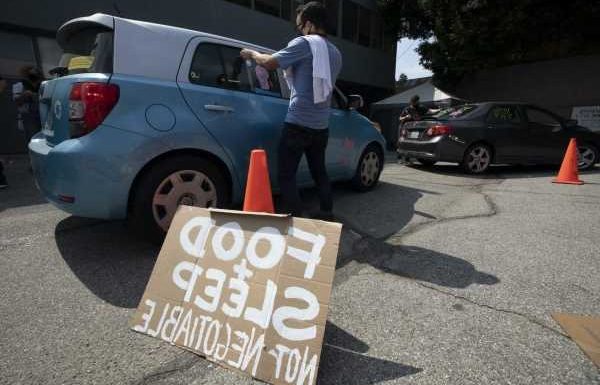
It’s a pivotal day in Hollywood. On Oct. 1, the 60,000 members of the International Association of Theatrical Stage Employees and its affiliates got ballots to authorize the IATSE strike vote. The union has made attempts to negotiate for more livable wages and humane working conditions for its thousands of crew members with the Alliance of Motion Picture and Television Producers. But IATSE leaders say the AMPTP haven’t approached them with reasonable contracts in response. Here’s everything you need to know about the origins of this uprising, and how this Hollywood strike could lead to an immediate halt in movie and TV production nationwide.
IATSE strike vote takes place Oct. 1
The coronavirus (COVID-19) pandemic shut down Hollywood. And now, the IATSE strike could shut it down again. And it’s all in the name of improving the quality of life for the thousands of people who work behind the scenes on your favorite shows and movies. The IATSE union consists of more than 360 local unions nationwide. There are three contracts in negotiation between IATSE and AMPTP: the Basic Agreement, the Area Standards Agreement, and the Videotape Agreement. The Basic and Area Standards Agreements expired Sept. 10. The Videotape Agreement expired Sept. 30.
IATSE is voting on Oct. 1 to authorize the strike. However, strike authorization doesn’t mean the union strike will begin immediately. It will be a huge signal to the AMPTP that a strike could be imminent, giving the IATSE considerably more leverage. Should the IATSE call for a strike to begin after the vote and any subsequent negotiations, all production covered by those three contracts would halt immediately.
According to Variety, the majority of Hollywood TV and film production is covered by those three contracts. HBO, Showtime, BET, and Starz production could continue during the strike. But HBO Max production is still up in the air.
The IATSE union strike is a fight for better treatment of Hollywood’s lowest paid workers. In recent weeks, the IATSE Stories Instagram account has detailed the “Hollywood horror stories” these workers have experienced. Workers have been revealing the unsustainable conditions they’re forced to push through, like not being able to eat during to 14+-hour work days and being too tired to drive home safely at the end of the day.
IATSE union strike could change Hollywood forever
Crew members have gotten into car accidents on their way home from work due to lack of food and proper sleep. Many workers have also said they don’t have time to have personal lives outside of work because of the intensely demanding work schedules. Some people have even shared with the IATSE Stories account that wages are so low, workers have turned to selling their plasma to make rent. They don’t have time to take on more work outside of production. This forces people to take desperate measures, as they’ve shared in their “Hollywood horror stories.”
IATSE’s biggest demands are having weekends off, the guarantee that breaks for food will be given, and higher wages. Currently, there are fees studios have to pay if they make employees work through their breaks. Many studios will incorporate those fees into production budgets. This means they intentionally take the financial penalty in order to make everyone keep working. IATSE is fighting for higher penalty fees so studios will stop paying their way out of breaks.
IATSE is also demanding longer turnaround between production days. Many workers have cited having barely any downtime between jobs, as their low pay makes them unable to say no to work. Basically, this potential strike is about demanding studios treat workers with basic human decency. This shouldn’t be something people have to fight for, but here we are.
‘Hollywood’s Bloody Friday’ was the last big union strike
The last crew strike of this magnitude was during World War II. The then Conference of Studio Unions and IATSE were in a turf war in 1945. IATSE was controlled by the Chicago Mafia at the time. Studios paid the mafia to suppress wages and strikes, according to The Hollywood Reporter.
The strike began on March 12, 1945, when 78 members of the Screen Set Decorators, part of Painters Local 1421, walked out. On Oct. 5, 1945, after seven months of striking, set workers, strikebreakers, and police got into a violent brawl outside Warner Bros.’ Burbank studio. The day is known as “Hollywood’s Bloody Friday” or “The War for Warner Bros.”
Should the IATSE strike happen, it could mark the beginning of the biggest worker strike in Hollywood history.
Source: Read Full Article
